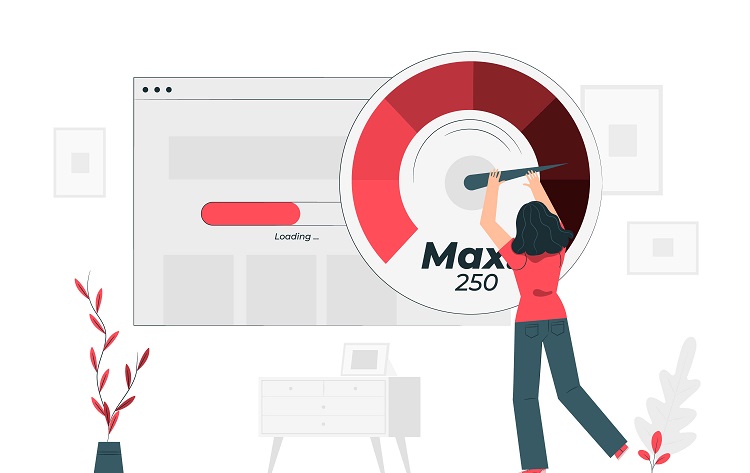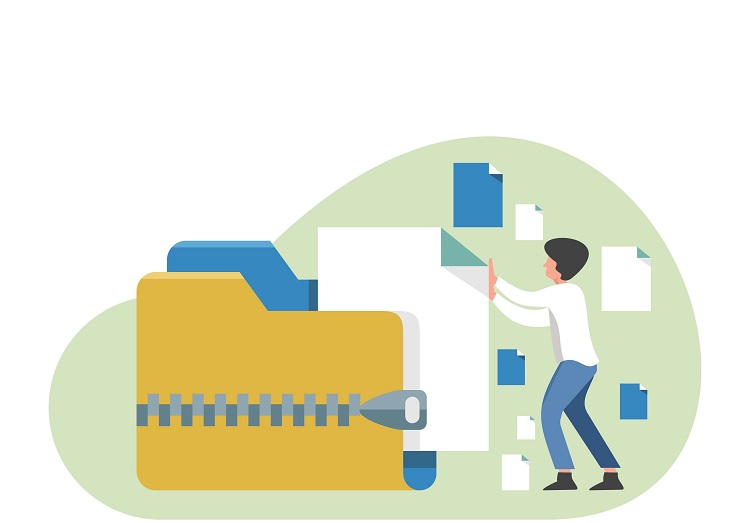Having a great website is absolutely essential when it comes to maintaining and growing your business in today’s competitive online world.
Whether clients and customers come to your website to purchase goods or to gather information, providing your visitors with an optimal experience is a must — and slow websites are a massive, yet quite preventable, turn-off that often increases bounce rates.
And now that Google has begun using mobile page loading times as part of its ranking algorithm, slow site speeds can absolutely negatively impact your search rankings.
We’ve gathered together 20 easy-to-implement website speed optimization tips you can use to increase your website’s speed in a snap.
How to Speed up Your Website in 2024
Providing a great user experience, including great visuals, smooth website navigation, and quick page loading, can be the difference that takes your business to the next level due to improved search rankings and customer engagement.
Read on to learn more about how to optimize website speed and about 20 of our favorite page speed optimization techniques — and don’t worry, we’ve included plenty of tips for WordPress users.
Minimize HTTP Requests
High numbers of HTTP requests can drastically slow a website’s loading speed. In a nutshell, your site won’t load until all HTTP requests have been resolved — fewer pings means faster loading.
Getting pesky HTTP requests under control is a simple way to optimize your website for speed.
There are several quick and easy ways to minimize HTTP requests and increase your website’s page loading speeds, including avoiding the use of customized fonts and disabling emoji functionality.
Setting your site up so that it only loads images once a visitor scrolls down to the appropriate point on the page will also shave time off your loading speeds.
Combine Static Files
Let’s start with the basics — what exactly is a static file?
A static file is any type of image, script, or file that a visitor to a website sees that doesn’t change in response to visitor characteristics or activities.
These are files that are downloaded from your server without alteration — think JavaScript, audio, video, CSS files, and more.
One of the most efficient ways to increase your site speed is to put your CSS and JavaScript code into one master file after removing all the extraneous characters and line breaks.
Compress that single large file into a zip file and you’ll be well on your way to a faster website.

Optimize Image Sizes
Reducing the size of the images on your page, otherwise known as image optimization, can often improve your website’s speed.
To get the most performance out of your website, make sure to use PNG files for graphic images with less than 16 colors and opt for JPEGs when adding photographs to your site.
Another option is to use CSS sprites to develop templates for regularly-used images — think custom buttons and icons.
CSS sprites reduce the number of HTTP requests by creating one large image file that quickly loads all in one go. It increases website speed by limiting the number of images that need to load before your page displays.
Use a Content Delivery Network (CDN)
If you’re running an online business with customers worldwide, a content delivery network (CDN) is an absolute must for providing a smooth user experience — and it’s a great way to boost your website’s speed as well.
CDNs host content on local servers around the world, reducing the time required to respond to HTTP requests from nearby locations.
CDNs speed the delivery of static images to viewers’ browsers, decreasing the time viewers spend waiting for content to load.
Cloudflare, Fastly, and Akamai are just a few of the CDN options currently available.
Write Mobile-First Code
It turns out the majority of online searches now take place on mobile devices.
Optimizing your site for mobile viewing can drastically improve your website’s speed when viewed on smartphones and tablets.
(Pro Tip: You can make things easy by using an up-to-date WordPress theme — most modern options come pre-optimized for mobile viewing.)
And as an additional benefit, using mobile-first indexing might well help improve your Google search rankings.
Starting back in 2018, Google began incorporating mobile loading times into its ranking and indexing algorithms — so having a mobile site designed with speed optimization in mind can pay off in terms of search rankings and visibility.
Minimize Time to First Byte

Let’s start with some definitions — what exactly is time to the first byte, and what does it measure?
Time to first byte (TTFB) measures how long it takes for a user’s browser to get a response from a server. TTFB is impacted by several factors, including the length of time it takes your server to process and respond to queries.
Consider giving your content management system (CMS) the once over to find ways to minimize the use of settings and features that slow response times.
If your site is hosted on a shared server, consider switching to a dedicated option to reduce resource-sharing-related slowdowns.
Minimize the Number of JavaScript and CSS Files
The number of JavaScript and CSS files you have on your website will impact the speed at which your page loads.
WordPress themes often have JavaScript files that don’t do much to improve your website’s functionality. Cutting down on these bits of extraneous code can give your site an immediate speed boost.
You can fix this issue by removing any redundant JavaScript files. Search your website’s source code for active JavaScript.
Remove a file and see if your site retains its desired functionality — if so, you’ve identified a selection that can potentially be removed to improve your site’s page loading speeds.
Use Asynchronous Loading for CSS and JavaScript Files
Opting for asynchronous loading is another quick fix that can increase the speed at which your site’s pages load.
Pages programmed to load images asynchronously load these files as the browser downloads other files instead of waiting for the page to load entirely before beginning the process of delivering CSS and JavaScript files.
And best of all, it won’t block page render or prevent other files from being downloaded simultaneously.
The increase in response speed can make a huge difference in your Google search results — and your customers will thank you.
Reduce the Number of Plugins
Your site’s speed is dependent on several factors, including the number of plugins you have installed.
It’s easy enough to remove or disable individual plugins to increase your page loading speed.
Determine whether you really need the functionality provided by the plugin and explore whether or not the same results can be achieved using alternate means such as code snippets.
Be wary of plugins that bundle several functions together — these large files are notorious for slowing down page loading speeds. Opt instead for a smaller option that offers the targeted functionality you need.
Implement GZIP Compression
GZIP compression increases your website’s speed by compressing the data your website sends — this includes text, images, fonts, scripts, image files, and more.
GNU Zip (GZIP) offers lossless data compression — you can use it to limit the amount of data taken up by basics such as HTML pages, scripts, and stylesheets.
The process works best with text-based data such as HTML, CSS, and JS files. GZIP compression isn’t the best option for compressing image and video files.
The process can actually reduce text files by anywhere from 70 to 90 percent under the right circumstances.
(Pro Tip: GZIP compression for WordPress speed optimization can be done super easily by using plugins native to most modern themes.)
Choose the Right Hosting Option

Believe it or not, where you choose to host your website can significantly impact your site’s loading speeds.
Shared hosting offers an affordable option that works well for sites that don’t receive much traffic.
You’re sharing hosting resources, so the resource demands of other sites on the shared server impact your site’s response speeds.
With VPS hosting, you get the best of both worlds — the ease of shared hosting as well as guaranteed dedicated server resource availability.
Your website’s speed won’t fluctuate as much as if your site were hosted on a shared server. For enterprise businesses, a dedicated server is pretty much the only option.
Dedicated hosting offers more space and control but requires expertise to set up and maintain.
Reduce Redirects
Getting rid of annoying redirects will not only improve your website’s speed — it’ll also improve your viewers’ user experience and improve your search engine ranking.
Redirects are essentially a wrong URL problem.
A visitor types in an incorrect address, then your website attempts to figure out where that visitor needs to be — this process costs time and is experienced as slow page loading times.
The problem often arises when updating older websites and is sometimes a sign that your site architecture needs updating to achieve the best site speed optimization possible.
The easiest way to avoid this problem is to refrain from creating redirects for items such as menus and internal links.
Use Website Caching
Enabling website caching can improve page response times by reducing the number of data visitors must download to view your site — caching essentially creates a file in which your website’s stylesheets, JavaScript files, images, and so forth are saved locally on the visitor’s browser.
There are several ways to get started with caching. For simple WordPress websites, a plugin often suffices.
If your site is hosted on a dedicated or VPS server, consider implementing object caching to speed response times up a bit.
Don’t forget to set a lifetime limit for your cache — anywhere from one week to a year works well for JavaScript, CSS, image, video, and PDF files.
Detect 404 Errors
You’re probably familiar with the dreaded 404 error message — it’s pretty much the bane of every internet user’s existence. But what exactly do these annoying messages mean?
A 404 error indicates that the page the visitor wants to see can’t be located on the server. The process of looking for these nonexistent URLs takes time — ultimately damaging your website’s response speeds.
If the problem crops up too much, it can actually negatively impact your search engine rankings.
These pesky errors pop up in several characteristic situations, most often when a page is removed from a website without the establishment of a redirect.
They also happen when webmasters update sites or transfer domains.
Run a Compression Audit
Running a compression audit is a great way to get page speed insight — it lets you know what files you can reduce to increase your website’s loading speed.
Pages with lots of data such as audio files and images take longer to load, but other than that, it can be difficult to know exactly which pages on your site are slowing things down.
Compression audits provide critical information such as current file sizes and how much space you’d save by compressing your files.
Once you’ve completed the analysis, you can use a tool like GZIP to quickly and safely compress your files which could help improve your page loading speeds.
Enable Compression

Make sure you’ve enabled compression for your website’s files — it’ll decrease the size of your files and pay off in terms of increased page loading speeds.
(Pro Tip: GZIP has pretty much become the gold standard among those in the industry, so it’s well worth your time to set this functionality up.)
You don’t have to take our word for it when it comes to compression’s speed-optimizing benefits!
The engineers at Yahoo determined that GZIP compression can reduce the time it takes files to download by up to 70%. There are tons of free online tools you can use to see if GZIP is enabled on your site.
Optimize CSS Delivery
CSS files house your website’s stylesheet. Make sure your CSS code is housed in an external stylesheet — it tends to deliver more efficient results than inline CSS.
It’ll also reduce the overall size of your file, and as an added bonus, there’ll be fewer code duplications.
The fewer stylesheets, the better — each external style sheet creates an HTTP request, and each HTTP request results in a reduction in page loading speed.
Reduce External Scripts
Getting rid of external files that aren’t increasing the functionality of your site often results in faster page loading times.
Most websites have tons of third-party integrations that aren’t integral to the site’s functioning.
Chrome’s Developer Tools give you a quick and easy way to identify all the external files running on your site.
If you don’t really need a particular integration, say because your visitors infrequently engage with a particular feature, consider removing the associated file to streamline your site and potentially give it a speed boost.
Consider Using Prefetch, Preconnect, and Prerender Techniques
So what precisely are developers talking about when they throw around words like prefetch, preconnect, and prerender?
Essentially all three are techniques you can use to increase your website’s performance by facilitating fast file delivery, including when a visitor is engaging with the content.
Both prefetch and prerendering are concerned with delivering files related to what the website user might navigate towards in the future.
Preconnect is a way to establish connections without the need for an HTTP request — and fewer HTTP requests almost always translate into faster websites.
Adopt Cloud-Based Website Monitoring

Before making changes to streamline your website, it pays to do a bit of research to determine where you can most efficiently make changes.
Consider using a cloud-based website performance monitoring service to gain insight into how your site’s key performance indicators (KPIs) are doing.
Cloud-based monitoring provides information about the efficiency of your site’s processes as well as data about the ease with which users can navigate your webpage.
There are tons of options available, including several that offer both real user and synthetic monitoring capabilities, giving you several data-gathering options.
You might be interested to check those related posts as well:
- 80+Impressive Site Speed Stats 2024 [Facts ad Trends]
- Creating the Best SEO Strategy in 2024 [Detailed Guide]
- 22 Best Website Builders For 2024 [Learn Digital Marketing]
Conclusion
Website speed optimization will be front and center in 2024, thanks to its role in driving customer engagement and determining Google search rankings.
Something as simple as optimizing your website’s speed might just be the key to getting the search rankings you want while providing your customers with an engagement and sales-driving experience.




